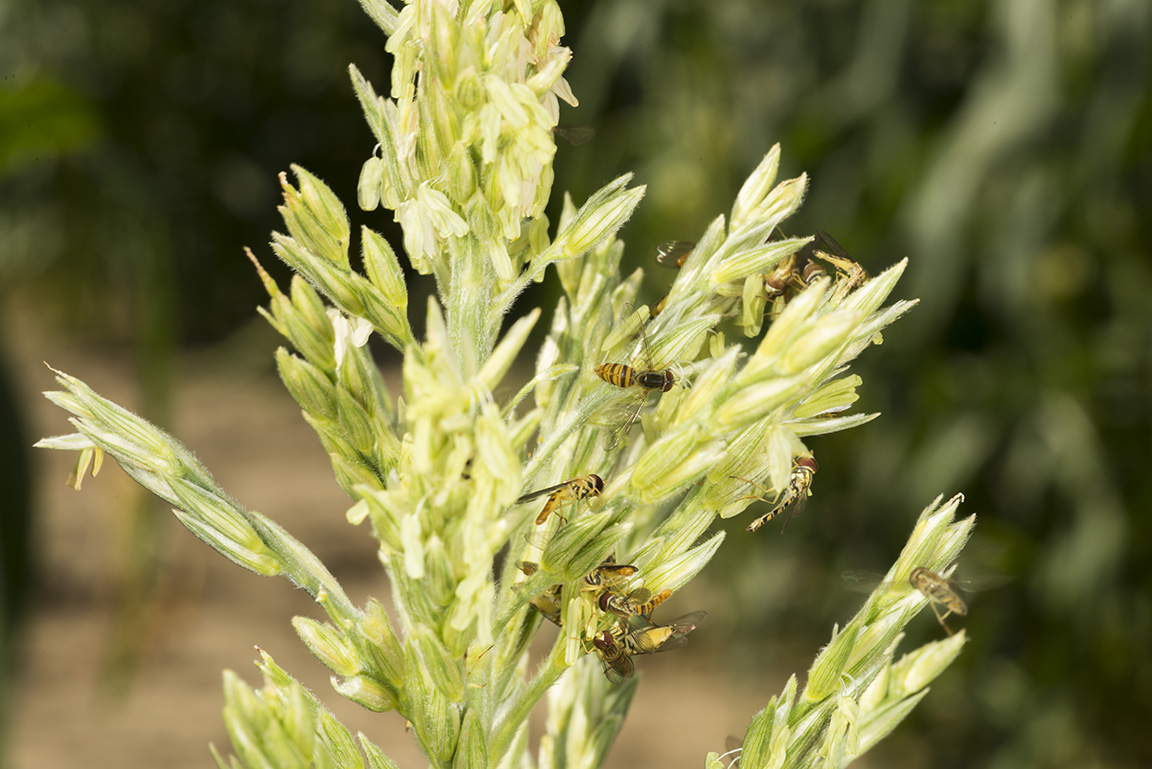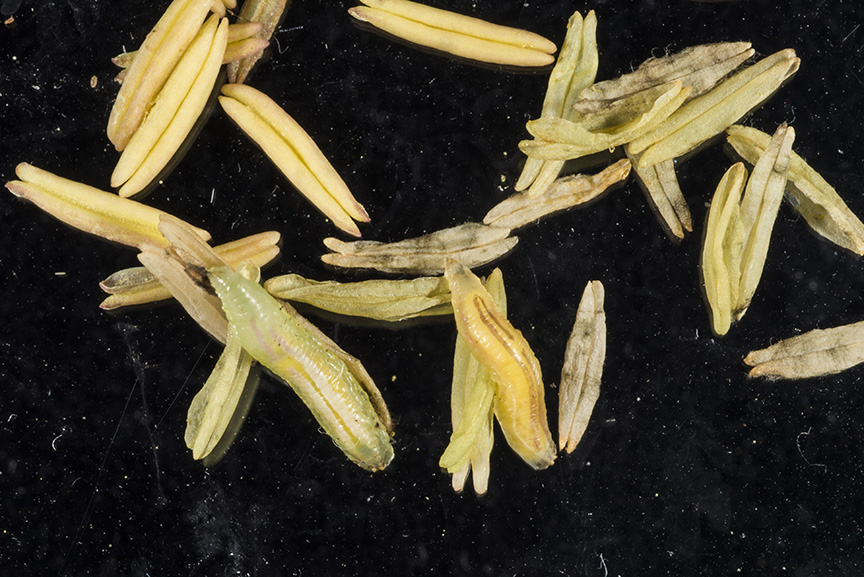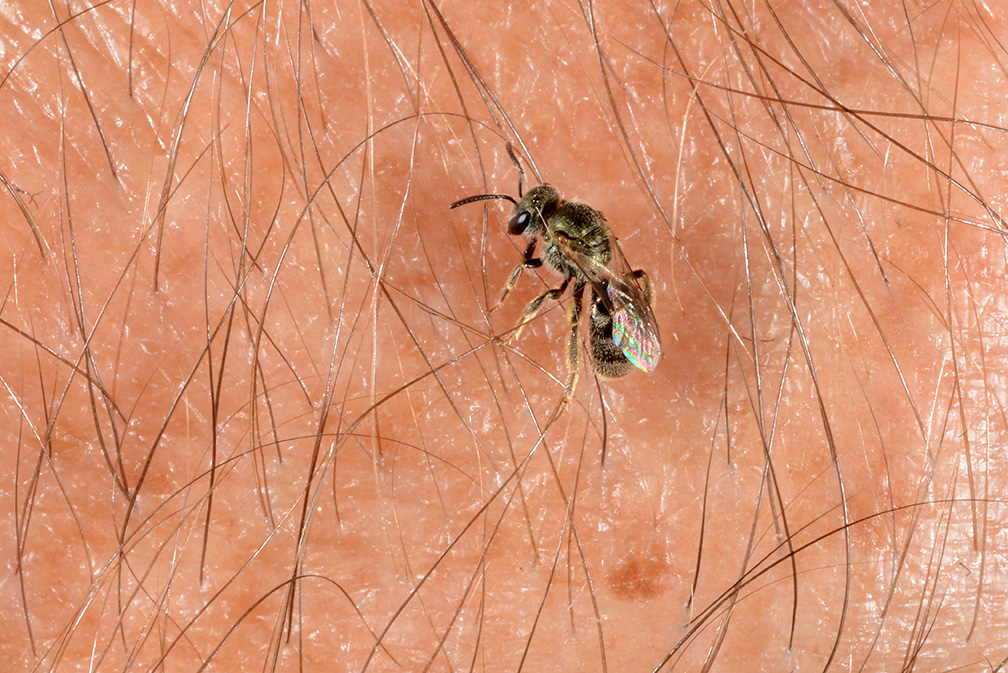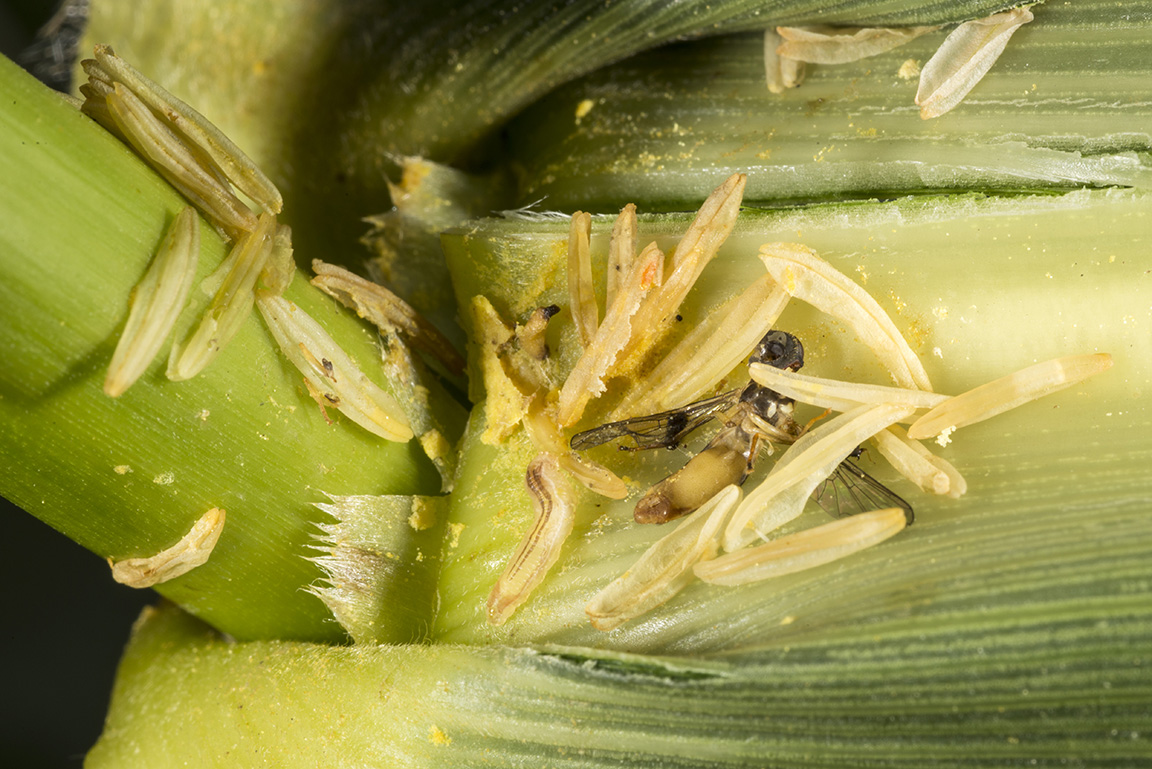Recently there have been numerous reports of swarms of “bee-like” flies around Indiana fields, farmsteads, and rural environments, and wanted to take the opportunity to tell you a bit about this curiosity. Adult hover flies (aka syrphid flies) can sometimes be mistaken for bees or wasps, because they look a lot like them! Some people refer to hover flies as “corn flies” or “sweat bees,” but these insects are actually quite different from bees.
Hover flies belong to the Order Diptera, or the true flies. The most noticeable group at this time of year belong to the genus Toxomerus, which feed on pollen. There are many other syrphid flies present throughout the season that are beneficial, as their larvae feed on soft-bodied insects like aphids.
Compared to sweat bees, hover flies have black and yellow markings, are able to fly in place yet dart away quickly, have a characteristic abdomen-bobbing behavior, and are unable to sting – in fact, they are harmless. Sweat bees, on the other hand, are typically dark or metallic in color, smaller than common honey bees and do have stingers. Both hover flies and sweat bees can be a minor nuisance, as they are attracted to us for moisture and salts they get by lapping up our sweat. Sweat bees will sting if accidently squished against our skin while they are feeding.
In cornfields and other flowering crops, you will likely find the larval form of this insect, a small, rather plain-looking maggot, feeding in leaf axils and other areas where pollen collects. They look very much like the spent pollen anthers. Be advised that the larvae are not pests, as they do not damage the crop. Rather, they are taking advantage of an abundance of pollen. This holds true for other flowering crops as well. As corn has pollinated at a more staggered rate than usual this year (a result of the wet spring and delayed/sporadic planting), you may continue to see these insects for a couple more weeks. Just remember they are not pests and cannot sting you, they just might be a bit bothersome hovering around you in large numbers!







